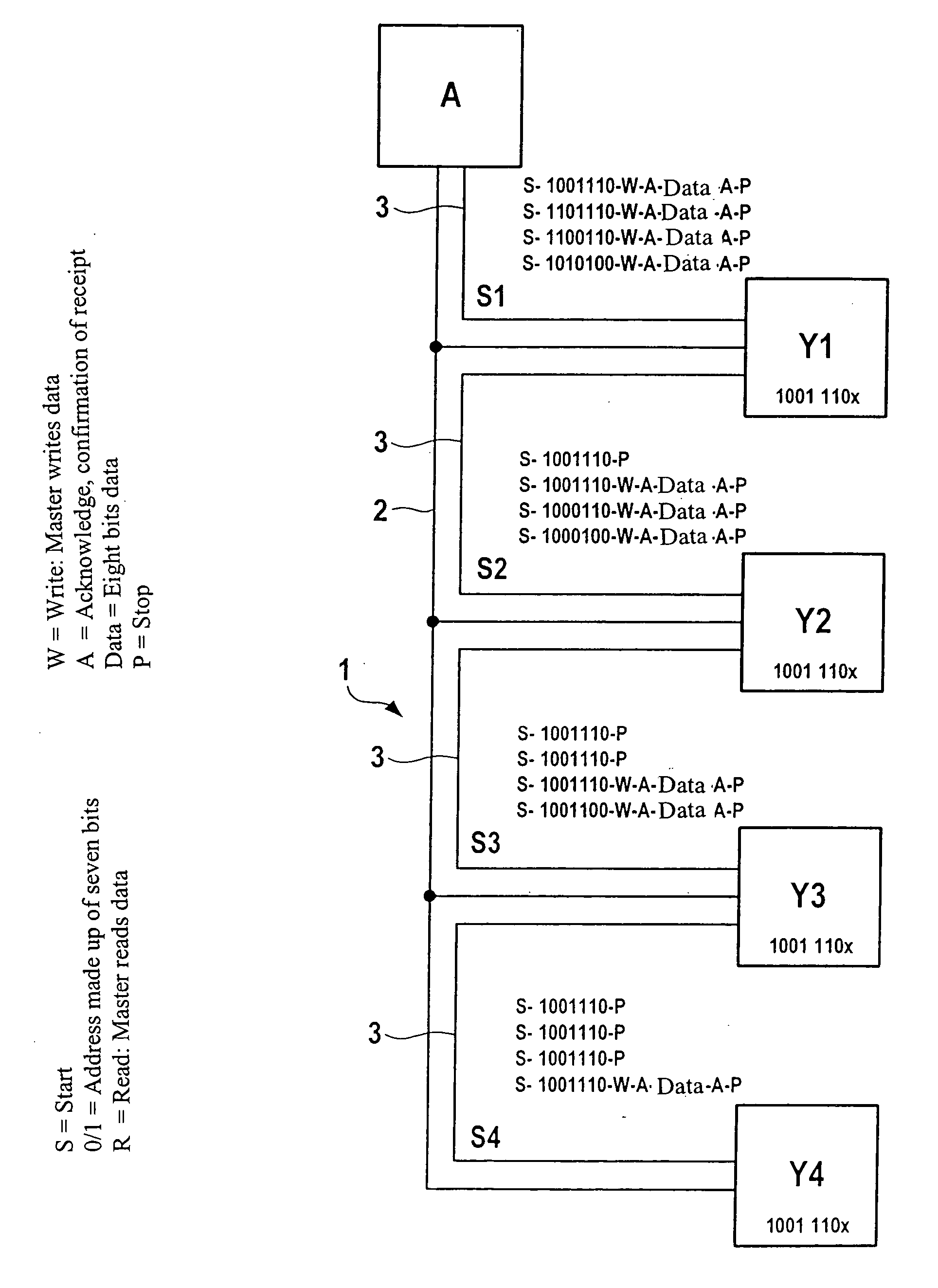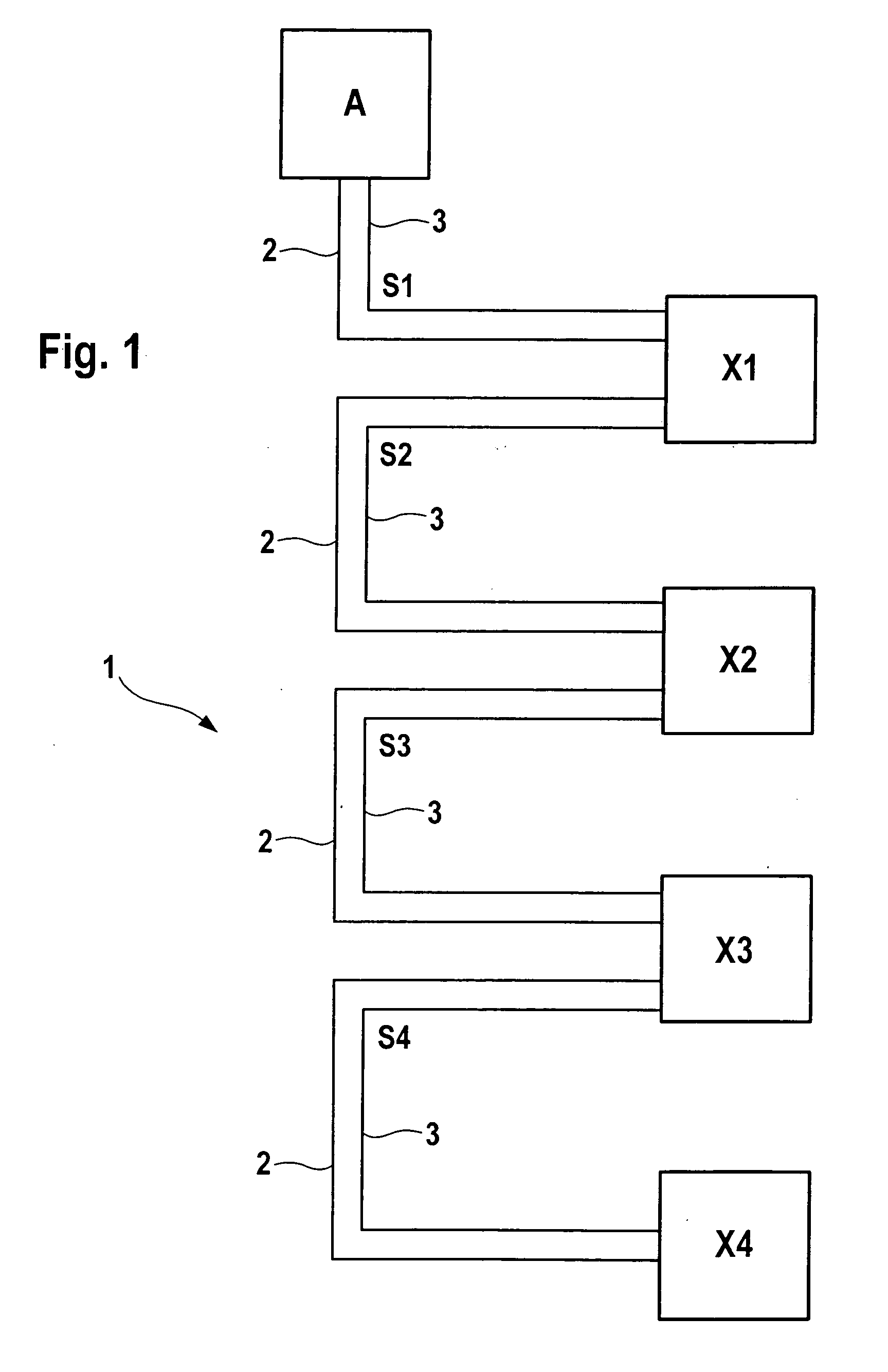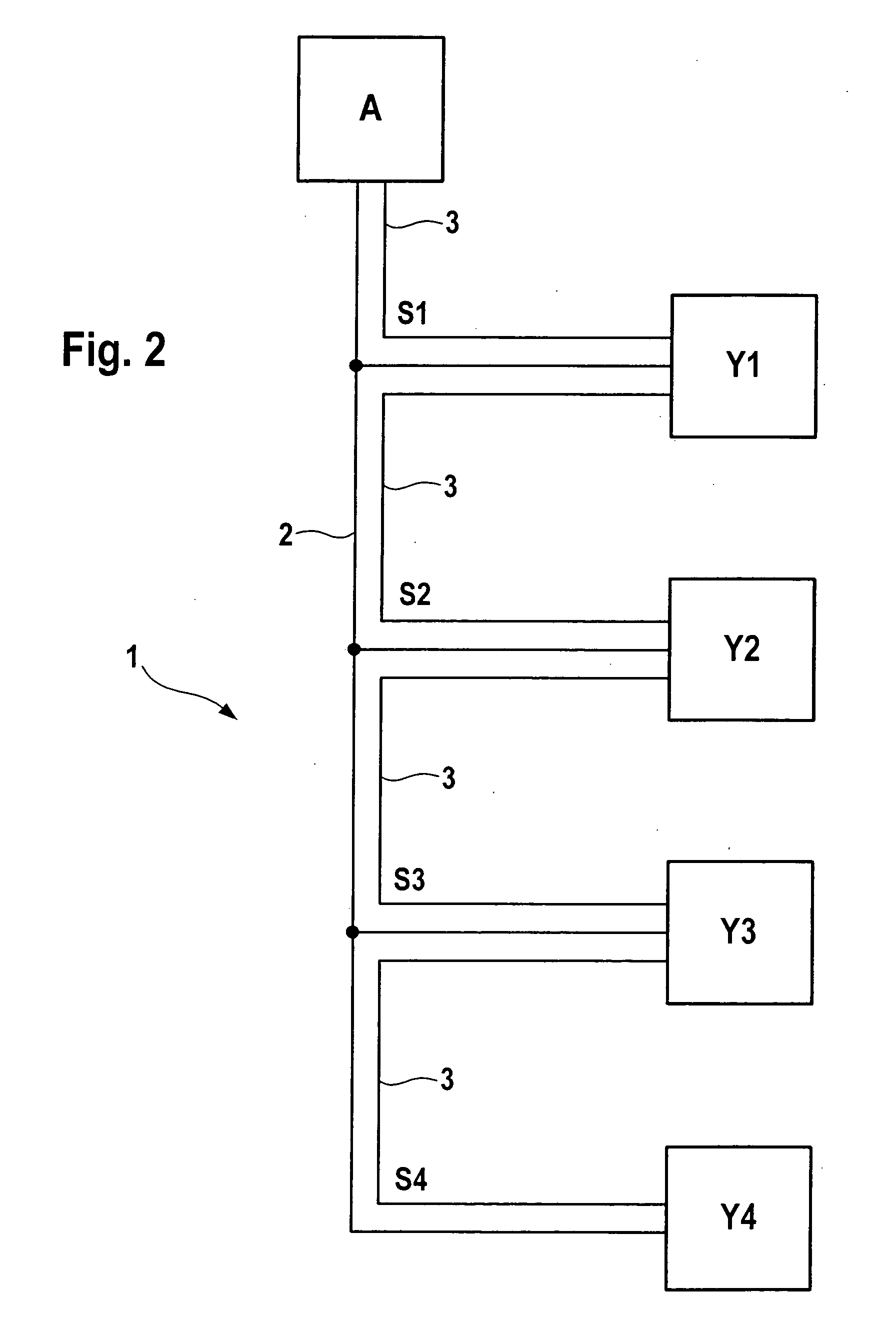Method for operating a plurality of subscribers connected to a serial bus
- Summary
- Abstract
- Description
- Claims
- Application Information
AI Technical Summary
Benefits of technology
Problems solved by technology
Method used
Image
Examples
Embodiment Construction
[0023] A bus structure from the related art is shown in FIG. 5. It has a data bus 1 which includes a first line 2 for transmitting a clock signal and a second line 3 for transmitting a data signal. In addition, the bus structure includes a master subscriber A as well as several slave subscribers B, C, D, E, which are all connected directly to the data bus, and are connected to one another via it for the purpose of data and information exchange. The bus structure shown in FIG. 5 is equivalent, for example, to the structure of a known I2C bus. Address signals are also transmitted via line 3 for the transmission of data signals, for instance, in time-multiplex operation. Accordingly, first the addresses are transmitted via line 3 and subsequently the data determined for the already transmitted addresses.
[0024] In the known bus structures, problems arise if several similar subscribers B, C, D, E, which are all addressable via the same addresses, are connected to bus 1, and are to be op...
PUM
 Login to View More
Login to View More Abstract
Description
Claims
Application Information
 Login to View More
Login to View More - R&D
- Intellectual Property
- Life Sciences
- Materials
- Tech Scout
- Unparalleled Data Quality
- Higher Quality Content
- 60% Fewer Hallucinations
Browse by: Latest US Patents, China's latest patents, Technical Efficacy Thesaurus, Application Domain, Technology Topic, Popular Technical Reports.
© 2025 PatSnap. All rights reserved.Legal|Privacy policy|Modern Slavery Act Transparency Statement|Sitemap|About US| Contact US: help@patsnap.com



